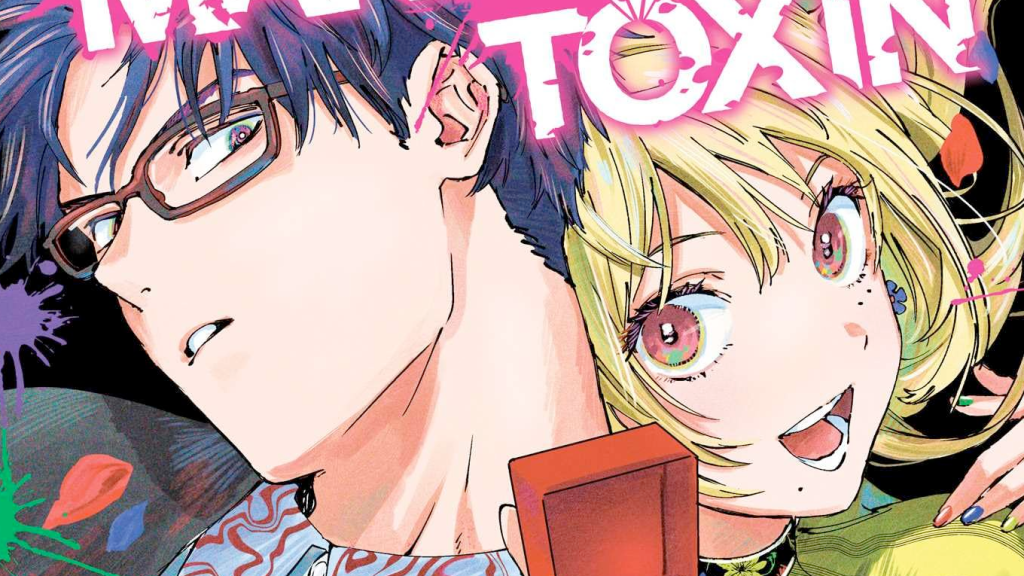
Sakamoto Days is officially on the way out, but we know what the next series you should pick up is. Although it’s currently unclear how long its final arc will prove, Jump fans are already curious to know what will fill Sakamoto Days’ void. Its runaway success shows, if nothing else, that it’s a peak exemplar of the absurd action-comedy genre that also encompasses, say, fellow giant Spy x Family.
The same could be said for Marriagetoxin, though. It falls into and excels within the same niche, but it hasn’t received the same degree of attention. Despite a mass of volumes, it still hasn’t been picked up for an anime yet. Hopefully, though, that’ll change soon. We aren’t going to sell you on the idea that Marriagetoxin will be a perfect replacement for Sakamoto Days. What we will sell you on is that it executes similar ideas in its own way, and that way is really special.
What’s Marriagetoxin About?

To draw an immediate connection in just a phrase: Marriagetoxin emphasizes the time period that Sakamoto Days takes for granted. Where Sakamoto Days throws you in and says “Taro Sakamoto started a family and wants to leave the assassin life behind”, Marriagetoxin says “watch Gero try to start a family and keep his clan alive.”
As the only active assassin of the legendary Gero Family, renowned for their mastery of poisons, Hikaru Gero must seek to give his clan an heir in order to protect his sister from having to leave her happy relationship with her girlfriend, marry a man, and start a family. He finds the perfect person for the job during an early execution order against Mei Kinosaki: a seducer/seductress by trade who changes their gender presentation to scam millionaires (but who, for the record, prefers presenting as a woman). Gero protects Kinosaki in return for Kinosaki’s assistance in helping Gero find a marriage partner.
Gero grew up in a brutal environment where he was effectively isolated, and he came out the other end completely awkward, so it’s pretty much necessary. Together, Kinosaki and Gero start picking up jobs with the intention of meeting potential marriage partners, taking out baddies, and, well, taking baddies out.
There are as many cute moments as hype or scary ones, something Sakamoto Days fans will be very familiar with. There’s a reason the mangaka of Demon Slayer, likewise known for its interplay of the cute and sinister, cites Marriagetoxin as a favorite. Just considering the first volume’s worth of material you could get through in an hour, Marriagetoxin had us cheesing just as much as Sakamoto Days did.
Marriagetoxin Could Scratch Your Sakamoto Days Itch

In fact, Sakamoto Days fans will find a lot of familiar elements in Marriagetoxin. At a fundamental level, both take place in societies where assassination is institutionalized and socially/politically tolerated (within reason). Although the way it plays this concept is a bit different from Sakamoto Days, Marriagetoxin‘s take is no less interesting: its emphasis on clan dynamics and underworld families is a marked departure that makes for some easy depth readers can dig into.
In terms of their action, Marriagetoxin can be just as over-the-top as Sakamoto Days, although it generally plays less into absurdity or has more stable mechanical/narrative explanations for why people can do what they do, thanks to “altered lineage” and the way Marriagetoxin integrates inheritance of abilities. By contrast, in Sakamoto Days, part of the fun is the way things just kind of happen.
The biggest connection aside from assassin action is that each series has a major emphasis on relationships, even if it’s executed differently. The critical difference here is in each one’s focus. Sakamoto Days emphasizes tight connections between unlikely individuals, thriving on its “found family” format; Marriagetoxin, by contrast, emphasizes “adult” relationships and has an overall more mature approach.
Marriagetoxin Also Stands on Its Own

A more mature approach, for the record, isn’t the same as a “better” approach; it’s just another kind of approach. And that’s what our Marriagetoxin recommendation comes down to. If you want high-stakes assassin action that can mimic Sakamoto Days, then Marriagetoxin will be just the thing you’re after. But Marriagetoxin is also so much more, coupling its action with dating advice, heartwarming feel-good moments, and surprising depth.
Every element of Marriagetoxin is considered. Its writing showcases this: consider its off-the-bat depiction of sapphic love and genderfluidity in Chapter 1, both of which are handled remarkably well moving forward. That thoughtfulness pervades the entire series, manifesting in different ways: for example, the subtlety with which its clan politics creep up behind a story that feels equal parts rom-com and suspense-thriller.
Its art is no slouch either. In a word, Marriagetoxin is just gorgeous: character designs are vivid and memorable, its paneling and panel composition are natural and striking, and its environmental design is as expressive as its characters are.
Marriagetoxin invites comparisons to Sakamoto Days, but it’s so good that seeing it just in terms of Sakamoto Days is unfair. It’s also a recipe for disappointment: where Sakamoto Days excels, like its sparks of familial cuteness, Marriagetoxin can leave you hanging. But the trick is that the same is true in reverse, as Marriagetoxin dives into its relationships (both within and without the assassin world) with a conversational depth that Sakamoto Days can’t quite channel. There are a lot of series like Sakamoto Days, but Marriagetoxin is most worthy of passing its torch.
Have we piqued your interest? Marriagetoxin is available on Manga Plus and VIZ. Give it a shot and let us know what you think in the comments. Finally, if you’re itching for more action-comedy anime, click through to the link below!
The post Sakamoto Days May Be Ending, but Shonen Jump Already Has a Great Successor You Should Try appeared first on ComicBook.com.

